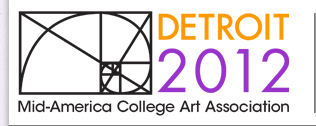Start Date
4-10-2012 3:00 PM
End Date
4-10-2012 4:30 PM
Session Description
If public art is to emerge beyond its present constraints it must include a new approach by adventuresome artists and public art agencies to include an embrace of the ubiquitous unmapped, and un-claimed territories which possess permeable borders found in our vulnerable communities and peripheral public spaces which are typically rooted on the edge of artistic heritage. The history of public art has shifted focus; it’s no longer about monuments or large scale projects with big budgets but about footnotes. The big events have been commemorated, now the little ones wait to shape our understanding of public space design. This new conception of public space design fills in spaces where stories haven’t been told, it’s more accessible to our daily uses and about anonymous people and communities who worked hard to build our communities from within. Moreover, it is the theoretical implications of how this is articulated in the context of communities in constant flux, subject to the effects of social dislocations, economic decay and misguided strategies for designing and engaging public space for an overly stimulated and distracted public.
More importantly, and perhaps the more interesting question could become, and the subsequent discussion of a presumed predictability must include the recognition that the future of public art is dependent on an overdue reexamination, and redefinition of meaning of the clichéd and over used term “site responsiveness” as the empirical definition of what constitutes “good public art.”
Make Up of Session Panelists
MACAA Craig Stone Abstract (7).docx (11 kB)
Craig Stone Abstract
We_Cant_Get_There_From_Here_ Chris_Williams-1.docx (12 kB)
Christopher Williams Abstract
Shifting Focus: Connecting Public Space with Everday Life
If public art is to emerge beyond its present constraints it must include a new approach by adventuresome artists and public art agencies to include an embrace of the ubiquitous unmapped, and un-claimed territories which possess permeable borders found in our vulnerable communities and peripheral public spaces which are typically rooted on the edge of artistic heritage. The history of public art has shifted focus; it’s no longer about monuments or large scale projects with big budgets but about footnotes. The big events have been commemorated, now the little ones wait to shape our understanding of public space design. This new conception of public space design fills in spaces where stories haven’t been told, it’s more accessible to our daily uses and about anonymous people and communities who worked hard to build our communities from within. Moreover, it is the theoretical implications of how this is articulated in the context of communities in constant flux, subject to the effects of social dislocations, economic decay and misguided strategies for designing and engaging public space for an overly stimulated and distracted public.
More importantly, and perhaps the more interesting question could become, and the subsequent discussion of a presumed predictability must include the recognition that the future of public art is dependent on an overdue reexamination, and redefinition of meaning of the clichéd and over used term “site responsiveness” as the empirical definition of what constitutes “good public art.”

